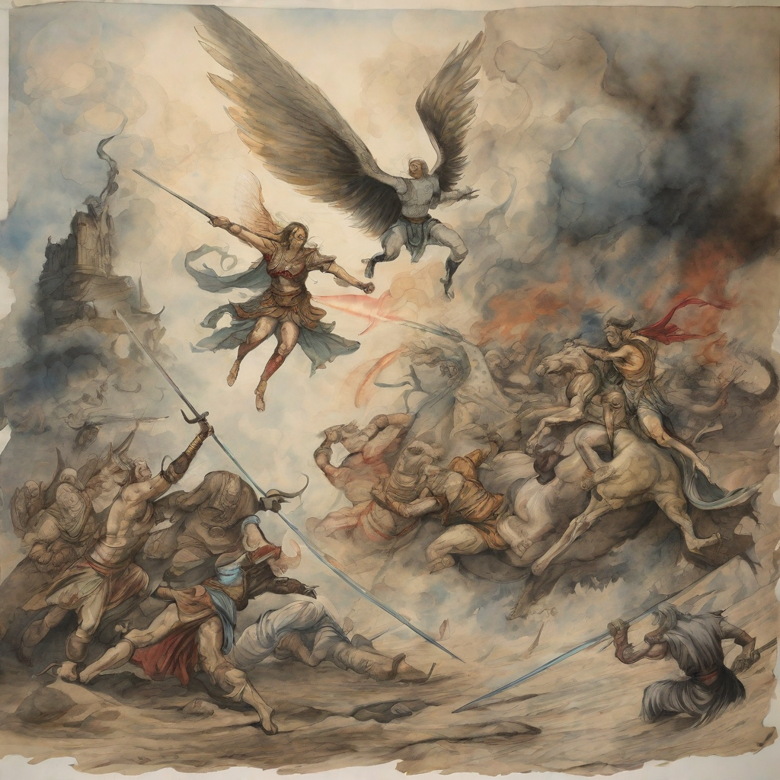
Angels are considered to be purely spiritual beings made of light. They are created to serve and worship Allah, and they are depicted as obedient, righteous, and without free will. Angels carry out various tasks assigned to them by Allah, such as delivering messages, recording human deeds, guarding individuals, and performing other divine duties.
On the other hand, jinn are believed to be created from smokeless fire, possess free will, and have a more diverse nature. Jinn are considered to be a separate category of beings with their own societies and individual abilities. Some jinn are believed to be righteous and follow the path of Islam, while others can be mischievous, rebellious, or malevolent.
The concept of a battle between angels and jinn can be found in Islamic folklore and some interpretations of Islamic texts. These stories often depict conflicts or encounters between certain jinn who have chosen a path of evil or rebellion against Allah and righteous angels.
One well-known story in Islamic tradition is the tale of Iblis (also known as Shaytan or Satan) and the angels. According to the story, Allah commanded the angels to prostrate before Adam, the first human being. While the angels complied, Iblis, who was a jinn, refused to obey this command out of pride and arrogance. This act of disobedience and his subsequent enmity towards humanity became the basis of the battle between Iblis and the angels.
It is important to note that these stories are not considered to be historical accounts but rather allegorical or symbolic narratives. They serve as moral lessons and reminders of the consequences of arrogance, disobedience, and the importance of faith in Islamic teachings.
According to Islamic tradition, Iblis (also known as Shaytan or Satan) was a jinn who was elevated to a position among the angels prior to his disobedience. The story goes that Allah created Iblis from smokeless fire, and due to his extraordinary devotion and piety, he was granted access to the company of the angels.
In this elevated position, Iblis was able to witness the actions and worship of the angels. When Allah commanded the angels to prostrate before Adam, Iblis, driven by his pride and arrogance, refused to obey. He considered himself superior to Adam, as Adam was created from clay while he was created from fire.
Because of his disobedience and refusal to prostrate, Iblis was cast out of the company of the angels and became a symbol of evil and temptation. He vowed to lead humankind astray and to oppose Allah's creation. Islamic tradition views Iblis as the primary adversary and tempter of humanity, constantly trying to divert people from the path of righteousness.
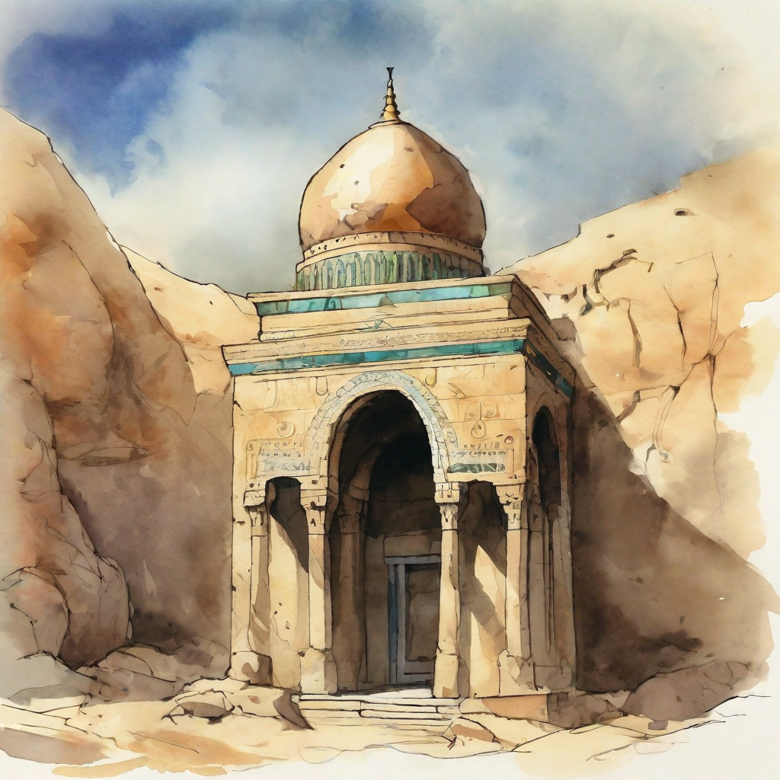
When the Quran describes the creation of jinn from "smokeless fire," it is not meant to provide a scientific explanation but rather to convey a symbolic and metaphorical understanding.
While the concept of "smokeless flame" in religious texts is not meant to be a scientific description, there are a few similarities that can be drawn between plasma and a metaphorical "smokeless flame":
Plasma, as understood in scientific terms, is a state of matter consisting of ionized gas with highly energized particles.
Ionization: Plasma is formed when atoms or molecules gain or lose electrons, resulting in the presence of charged particles (ions) and free electrons. Similarly, the idea of a "smokeless flame" could be seen as a state of fire or energy where the particles are highly energized and possibly ionized.
High Energy: Plasma is known for its high energy state. It can generate intense heat and emit light. Similarly, a "smokeless flame" could be understood as representing a form of energy that is highly energetic and radiant.
Lack of Smoke: One defining characteristic of a smokeless flame is the absence of smoke or residue. Similarly, plasma does not produce smoke since it is composed of ionized gases and does not involve the combustion of solid particles.
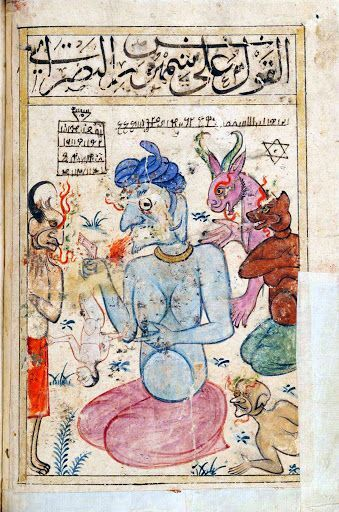
Jinn Samhuras, the jinn king of Thursday. Demon portrait. From Kitab al-Bulhan; Book of Wonders 14th Century
According to the Alawi sect, the jinn are part of the "circle of time", belonging to a period preceding the creation of mankind. Therefore before humans, the hinn, binn, timm, rimm, jann and jinn roamed the earth. These six periods symbolize negative progress until humans emerge, thus the first letters of the first four circles mean Habtar (here referring to the personification of evil) and the latter referring to jann and jinn as subordinates of the devil. The following circle divides human history, starting with Adam and ends with Muhammad, the period in which humans now live.
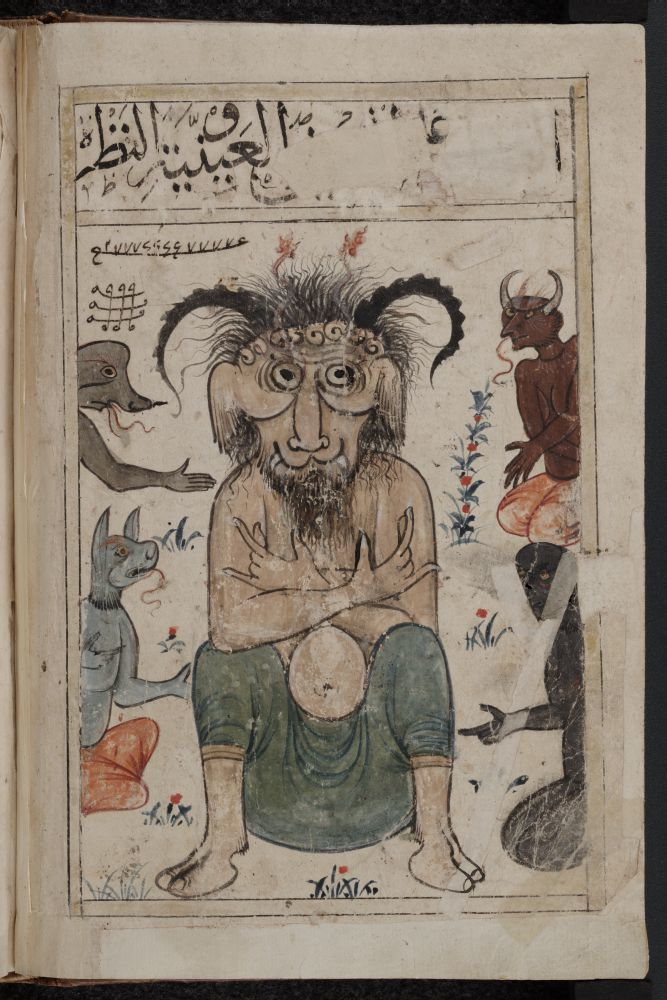
The Devil
Iblis/Shaitan -šayṭān, Hebrew: שָׂטָן, "devil", "satan", or "demon", plural: šayāṭīn (شَيَاطِين)) is an evil spirit in Islam, inciting humans and the jinn to sin by "whispering" (وَسْوَسَة, waswasa) in their hearts (قَلْب qalb). Although invisible to humans, shayāṭīn are imagined to be ugly and grotesque creatures created from (hell-)fire.
Five children of Iblis are mentioned throughout tafsir (Quranic exegesis) on Surah 18:50, each a devil (shaiṭān) assigned to a specific task to do evil. Their names are: Dasim, Awar, Sut, Thabar or Theber, and Zalanpur or Zalinbor.
They reproduce by laying eggs. (Not sure if they're dragons)
Ifrit عفريت - is a powerful type of demon in Islamic culture.
Qareen (Arabic: قرين qarīn, literally meaning: 'constant companion') is a spiritual double of human, either part of the human himself or a complementary creature in a parallel dimension.[1][2] Due to its ghostly nature, the Qareen is classified among the Jinn-type creatures, although usually not actually a Jinni.
Si'lat literally: "Hag" or "treacherous spirits of invariable form" is a supernatural creature assigned to the jinn or ghouls
Marid - a type of rebellious demon in Islamic traditions
Ghouls - is a demon-like being or monstrous humanoid, often associated with graveyards and the consumption of human flesh
Shedim שֵׁדִים - With the translation of Hebrew texts into Greek, under the influence of Zoroastrian dualism, the term shedim was translated into Greek as daimonia with implicit connotations of negativity. Later, in Judeo-Islamic culture, shedim became the Hebrew word for Jinn conveying the morally ambivalent attitude of these beings.
El Naddaha - takes the form of stunningly beautiful woman who appears, as if by chance, to men walking by the Nile or the Nile's water canals at night. The men are usually a pair. The creature calls one by his first name, rendering him speechless, hypnotized, and obedient to her voice which he blindly follows, while the other man is unaffected, and attempts to pull the other back. The creature calls in a soft, sleepy, hypnotizing voice until the second unaffected man succeeds at last in reviving the called man from his trance. The two run away as fast as they can, hearing her voice still echoing as they run.
Aicha Kandicha - Moroccan folklore, similar to jinn. Typically depicted as a beautiful young woman who has the legs of a hoofed animal such as a goat or camel. Although descriptions of Aicha Kandicha vary from region to region within Morocco, she is generally thought to live near water sources, and is said to use her beauty to seduce local men and then madden or kill them. El Naddaha النداهة "the caller" similar creature.
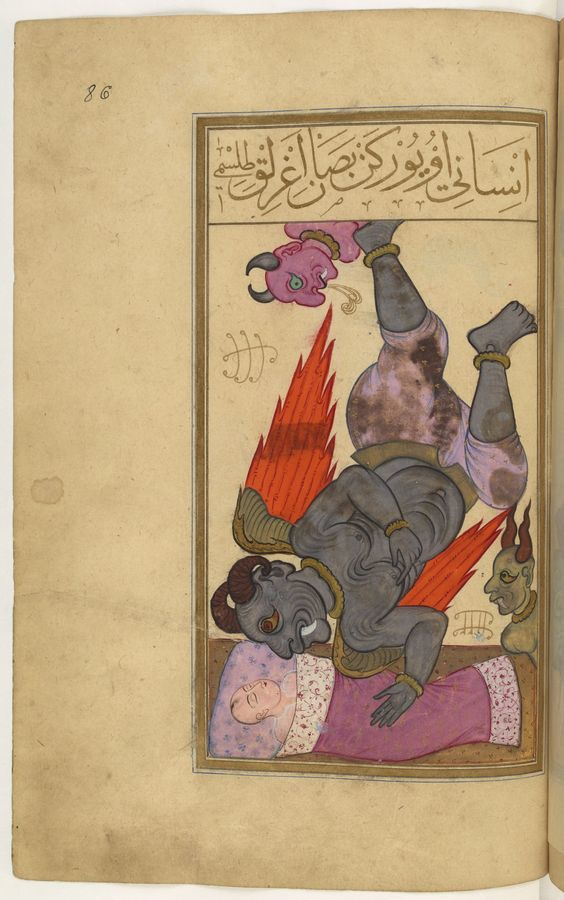
Comments
Post a Comment